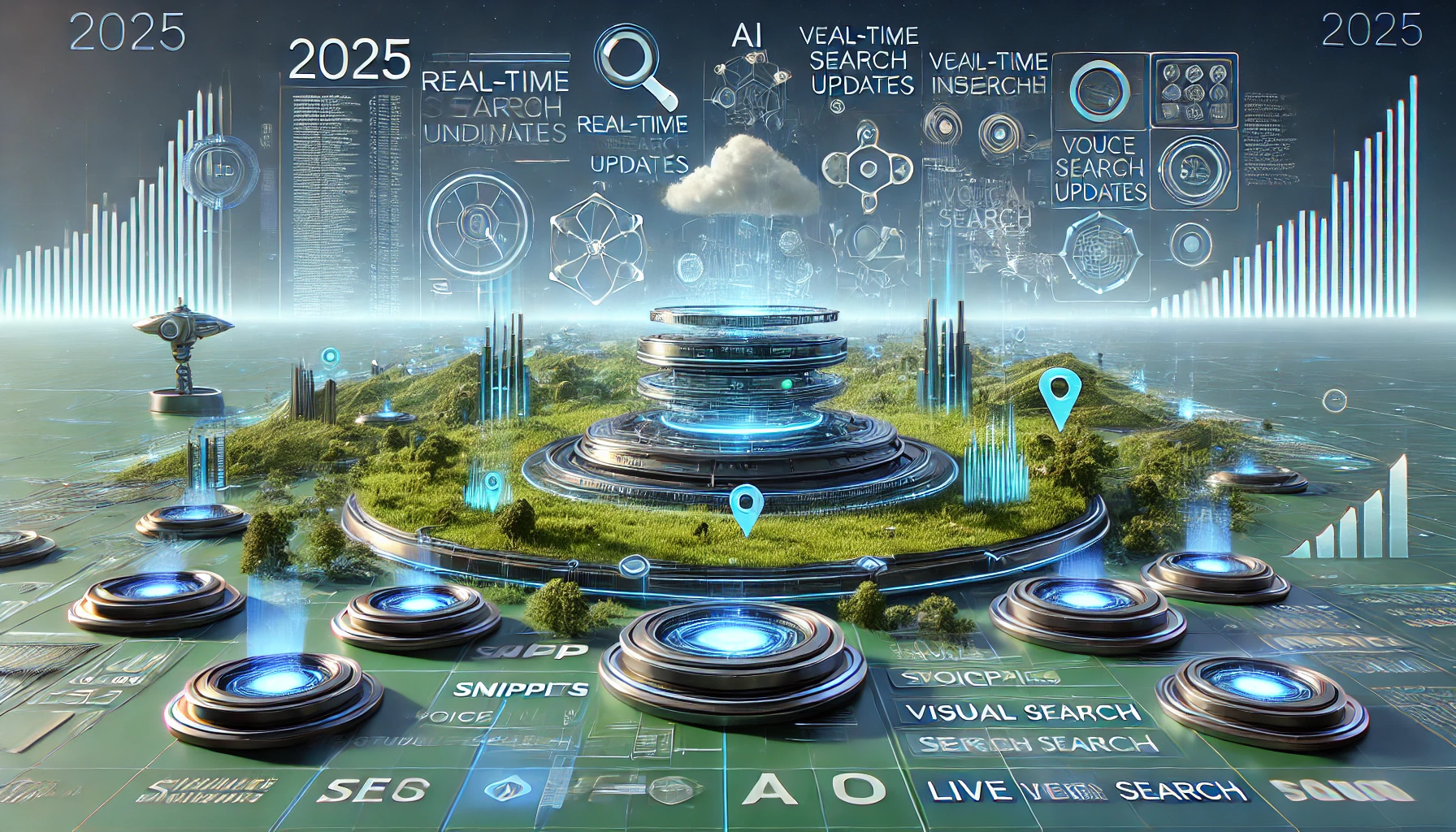
SEO Principles In 2025
SEO in 2025 will be defined by adaptability, with marketers needing to respond to frequent algorithm adjustments, integrate AI-powered SERP features, and optimize content structure to meet evolving search patterns. This article explores the core components of SEO in 2025, covering everything from real-time SERP tracking and dynamic keyword optimization to structured content creation and the role of AI in search.
SEO in 2025 is about staying updated with real-time changes, adjusting to frequent updates, and focusing on AI and user-friendly features. These strategies must adapt quickly to regular updates in algorithms.
SEO Strategies
AI-Powered Search Algorithms and SEO
Explore how AI advancements shape search algorithms, content relevance, and ranking factors. Focus on optimizing content to align with AI-driven search trends.
Voice Search Optimization Techniques
Voice search is growing in popularity; optimize for natural language and long-tail keywords to capture voice search traffic.
Visual Search in SEO: Best Practices
Explore image SEO techniques, including structured data for visuals, to prepare for visual search. Cover tools that analyze image relevance.
E-E-A-T (Experience, Expertise, Authoritativeness, and Trustworthiness)
Update SEO content to emphasize experience alongside expertise, authoritativeness, and trustworthiness. Analyze case studies demonstrating E-E-A-T success.
SEO Automation Tools and Techniques
Focus on tools automating keyword research, content optimization, and ranking analysis. Share insights on balancing automation with manual input for high-quality SEO.
Privacy and Data Compliance Impact on SEO
Write about how data privacy laws, like GDPR and CCPA, influence SEO strategies and data-driven decision-making.
Hyperlocal SEO and Micro-Moments
Discuss the increasing importance of local SEO, especially with micro-moments where users seek immediate answers. Emphasize hyperlocal keywords and content personalization.
Sustainable SEO: Environmentally Friendly Search Practices
Explore SEO techniques that reduce carbon footprints by optimizing load speeds, lowering energy consumption, and promoting sustainable hosting.
Most Advanced SEO Features in 2025
1. Real-Time SERP Tracking
Real-time search result updates are significant for SEO since they reflect current trends and Google’s AI algorithms that continuously adjust SERPs. Tools like Ahrefs, SEMrush, and Moz provide near-real-time tracking to help marketers monitor these movements and adjust quickly when rankings shift, which can help capture user intent more precisely as search preferences change rapidly.
2. Technologies Behind Real-Time SERP Adjustments
Google’s use of AI, natural language processing, and continuous indexing techniques has greatly influenced real-time SERP functionality. These advances mean that SERPs are more dynamic, and understanding Google’s AI mechanisms can help strategists prepare content better suited for quick indexing and adaptation.
3. Optimizing for Real-Time Search and Trending Keywords
In 2025, aligning content with trending keywords is crucial. Quick content updates, using tools to analyze popular keywords, and having a flexible content strategy that includes social media are essential steps to capture attention as trends emerge. This approach helps maintain relevancy as users’ interests evolve more quickly than ever before.
4. Strategic Use of Heading Tags (H1, H2, H3)
Headings are critical for SEO, especially when SERPs change frequently. Structuring content with proper heading tags improves crawlability and helps readers and search engines better understand topic relevance. Properly optimized headings (H1 for main titles, H2 for subsections) make it easier to rank for both primary and secondary keywords within dynamic SERP contexts.
5. Emphasizing Quality Over Quantity in Traffic
With the rise of AI-generated answers, zero-click searches are expected to increase, where users get their information without clicking through to a website. To counterbalance this, a shift toward creating content that fulfills specific user needs and encourages engagement (through interactive or visually engaging content) is advisable.
Case Study: Strategies for Driving Traffic to Webxfixer.com
Leverage Trending Topics and Keywords
Use tools like Google Trends, Ahrefs, or SEMrush to identify high-traffic topics in real time. Craft blog posts around these trends while maintaining quality and relevance to your SEO niche.
Optimize Content for Featured Snippets and FAQs
With Google displaying featured snippets for many queries, aim to format content with structured headings and lists that are likely to be picked up as snippets. Add FAQs and clearly defined answers to relevant questions within each blog post.
Integrate Visual Content and Infographics
Visual elements increase engagement and social shares. Create SEO-driven infographics or visuals that highlight data or strategies relevant to your posts, making them shareable across platforms.
Build a Strong Internal Linking Structure
Link related blog posts to create a content cluster, enhancing site navigation and signaling search engines about the relationship between different pages.
Promote Content through Guest Blogging and Backlinks
Pitch guest posts on authoritative sites in the SEO industry to build backlinks and expand your audience reach. Additionally, consider guest posts targeting the latest SEO trends, linking back to Webxfixer.com.
Collaborate with Influencers and Industry Experts
Industry influencers and experts can lend credibility and a broader audience to your blog. Feature interviews, quotes, or guest articles from trusted figures in the SEO field.
Optimize for Core Web Vitals and User Experience
Google’s focus on Core Web Vitals and UX requires fast load times and a mobile-friendly design. Regularly update Webxfixer.com to meet these metrics, which are critical for ranking and user retention.
Utilize Social Media with SEO-Focused Posts
Repurpose your blog content into short social media posts or reels that link back to your blog. Include trending SEO topics with relevant hashtags to capture search traffic within social platforms.
Conclusion
As we look ahead, it is clear that SEO in 2025 will be a blend of science and adaptability, requiring a more nuanced understanding of both technical and user-centric optimization strategies. Real-time tracking, AI-driven insights, and a flexible content strategy will become indispensable tools for staying competitive in search rankings. The rising influence of zero-click searches and AI-generated answers also emphasizes the need to create meaningful, engaging content that resonates with users and enhances visibility in a constantly shifting digital landscape. By embracing these advanced SEO techniques and technologies, businesses can better navigate the challenges of a real-time SERP environment and continue to connect with audiences in a relevant and impactful way



